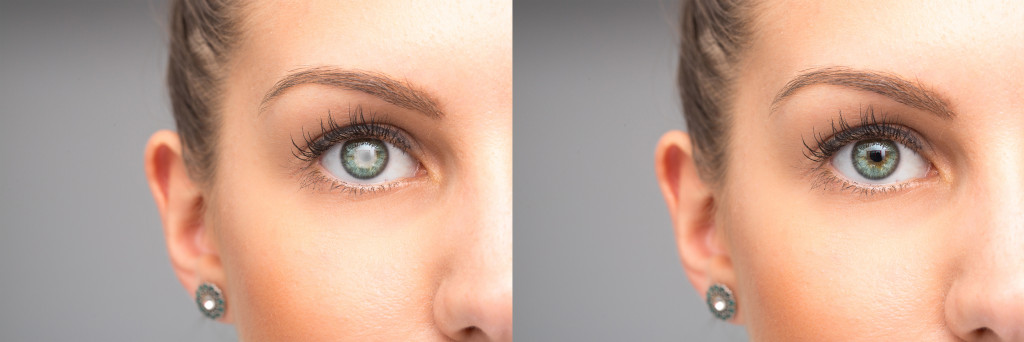• Cataracts are a clouding of the lens in the eye that can lead to vision loss and other serious problems.
• Risk factors for developing cataracts include genetics and environmental exposures such as UV radiation.
• Smoking has been linked to an increased risk of cataracts in adults.
• Common cataract symptoms include blurred or fuzzy vision, difficulty recognizing faces and colors, and glare from lights, which can be highly bothersome for people with cataracts.
A cataract is a clouding of the lens in the eye that can lead to vision loss and other serious problems. According to the National Eye Institute, over half of all Americans aged 80 and over have had cataract surgery. Despite this, many people are unaware of how a cataract can affect daily life or the symptoms and treatments. Here’s a break of what cataracts are, how they can impact your everyday life, and potential treatments for them.
What Are Cataracts?
Cataracts occur when proteins in the eye’s lens clump together and form a cloudy area. This cloudiness blocks light from reaching the back of the eye, causing vision to be blurry or hazy. In some cases, it may make objects appear faded or yellowed.
Risk Factors
Cataracts usually develop over time as part of normal aging, but there are also other reasons why it happens. Here are some risk factors for this disease.
Genetics
Cataracts can also be genetic, meaning if someone in your family has had cataracts, you may be more likely to develop them. Therefore, it is essential to talk to your doctor about your family’s history of cataracts so that they can better assess your risk.

Environmental Exposures
Exposure to certain environmental factors, such as UV radiation from sunlight or X-rays, can increase your risk of developing cataracts.
This is why it is essential to wear sunglasses with UV protection outdoors and follow safety protocols when exposed to X-rays for medical procedures or dental X-rays. Smoking cigarettes is another environmental factor that increases one’s risk of developing cataracts due to its role in damaging cells within the eye lens over time.
Smoking
Smoking has been linked to an increased risk of cataracts in adults. In addition, research has shown that smoking increases oxidative stress on the eyes, which can damage the lens over time. Quitting smoking and avoiding exposure to secondhand smoke can reduce this risk substantially. Smoking has also been linked to other severe eye conditions, such as glaucoma and macular degeneration, so quitting is recommended for overall eye health.
How Can Cataracts Affect Your Daily Life?
The most common symptom of a cataract is blurred or fuzzy vision. This can make it difficult to see clearly when reading, driving at night, or engaging in other activities that require good vision. It can also cause difficulty with recognizing faces and colors.
Additionally, glare from lights can be highly bothersome for people with cataracts —this could make it difficult for someone with cataracts to drive during daylight hours as well as during nighttime hours due to headlights from oncoming cars being exceptionally bright and difficult to manage with cloudy lens blocking their sightline.
Treatments for Cataracts
Fortunately, there are several treatments available for people who suffer from cataracts. Here are some of those treatment options.
Surgery
One of the most effective ways to remove cataracts is through surgery. An experienced cataract surgeon can remove the cloudy lens and replace it with a clear artificial one. This procedure is typically done in an outpatient setting and only takes about fifteen minutes to complete.
After surgery, there may be temporary side effects such as blurry vision, glare, or double vision, but these should resolve within a few days of the surgery.

Medication
Prescription eye drops can also help slow the progression of cataracts. These eye drops are typically used with other treatments such as lifestyle changes, surgery, or lens replacement.
Lifestyle Changes
Making small changes to your day-to-day activities can also be an effective way to manage symptoms and possibly even improve vision.
One of the changes people experience as they age is developing a cataract on their eyes’ lenses which often leads to impaired vision if left untreated. A person suffering from cataracts might experience blurry vision or difficulty seeing at night while driving, making everyday tasks more challenging than they should be.
Luckily there are ways to manage this condition. Regardless if you’re already experiencing symptoms or not – it’s always important for everyone over 40 years old (especially those over 65) to get regular check-ups done with an optometrist so any potential issues can be spotted early on before they start affecting your daily life too much!


